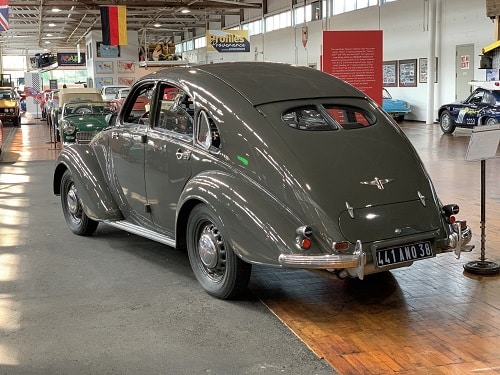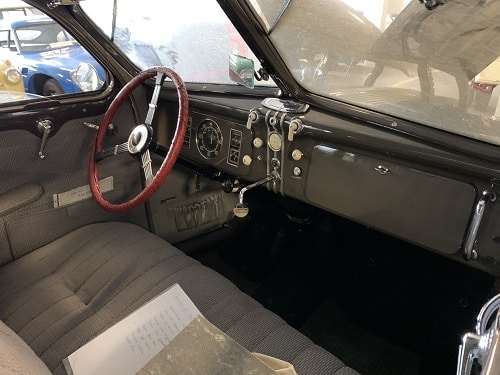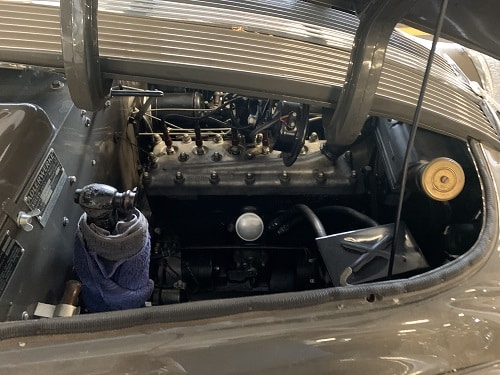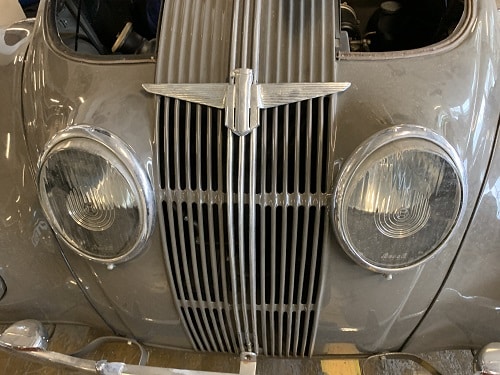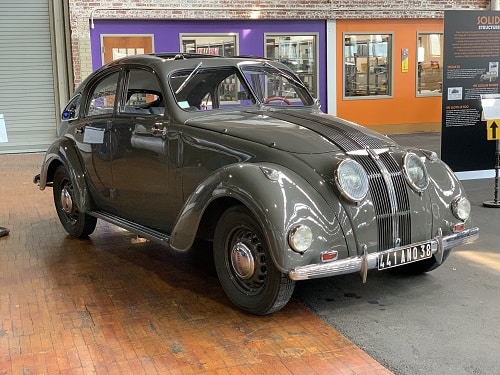
Adler Type 10 2.5 Litre- 1938
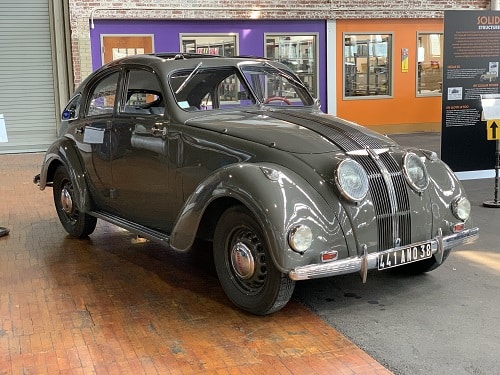
Frankfurt-based, Adler started manufacturing bicycles in 1896. Later the company turned to produce motorcycles, typewriters—and moved on to cars. In early 1900, Adler was already manufacturing automobile components when its first car, a Renault-influenced, De Dion Bouton-powered, lightweight “voiturette” was introduced. But within only a few years, the company proceeded to its own single- and twin-cylinder engines. By 1910, Adler was producing four-cylinder engines exclusively, and in the 1920s, six- and a straight-eight-cylinder were added to the engine range.
In design, Adler cars remained conventional until the arrival of the Trumpf in 1932. The Trumpf was a revolutionary front-wheel-drive vehicle with independent suspension all-around. Designed by HG Röhr and premiered at the Geneva Salon, the Trumpf was a few years before the launch of Citroën’s much better known, mass-produced front-wheel-drive, Traction Avant (ca. 1934). Rack-and-pinion steering was another Trumpf innovation and a feature that early Tractions did not have.
By the 30s, automotive engineers were recognizing the importance of aerodynamics in passenger car design. The Adler Type 10 you see here typifies this trend. Introduced at the 1937 Berlin Motor Show, Adler’s fastback streamliner caused a sensation and was given the name “Autobahn Adler” referring to its cruising ability on Germany’s expanding motorway network. The Type 10 was offered with two- or four-doors, as a coupe, convertible, or sedan. The striking four-door saloon body was the work of Karl Jenschke, formerly with Steyr-Daimler-Puch and creator of the Steyr 50. Its streamlined fastback design boasted the commendably low drag coefficient of 0.36 and, coupled with its 2,494cc side-valve, straight-six, which produced 58 hp, the Type 10 had a top speed of 78 mph! Another great feature was its huge steel, sliding sunroof panel which extends almost to the full width of the roof, spanning from behind the front windscreen to halfway over the rear doors.
Specifications:
Manufacturer: Adlerwerke
Country of Origin: Germany
Drivetrain Configuration: Front-engine, rear-wheel drive
Engine: Water-cooled, straight-six side-valve, 2,494cc, 57 hp
Transmission: Manual 4-speed, with synchromesh on the top three gears
Top speed: 78 mph
Years Produced: 1937 – 1940
Number Produced: 5,295 (all versions)
Cost: Roughly 5,750 Marks

